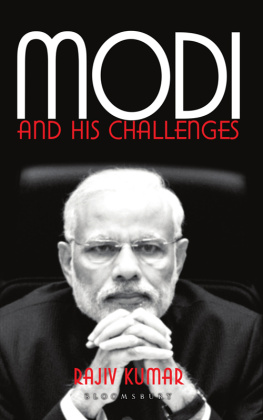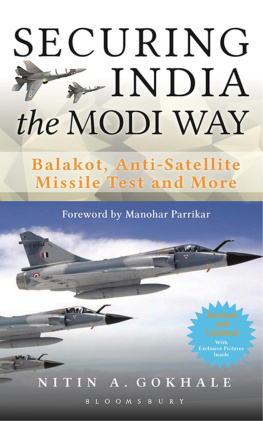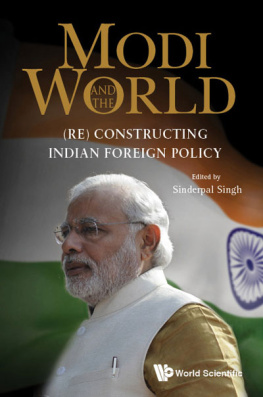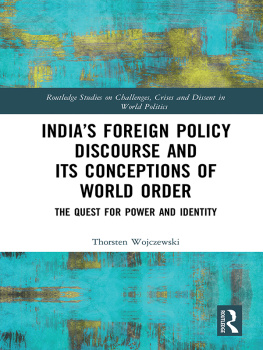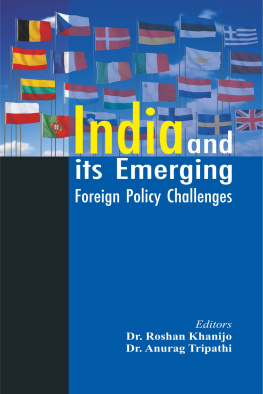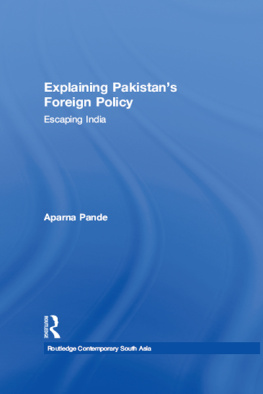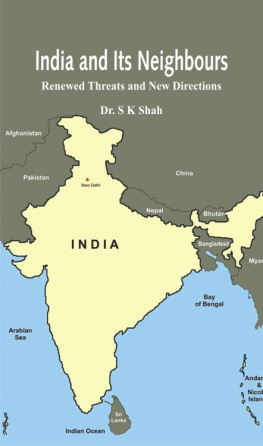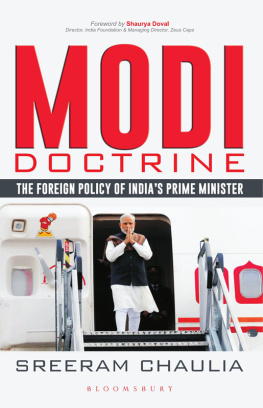Table of Contents
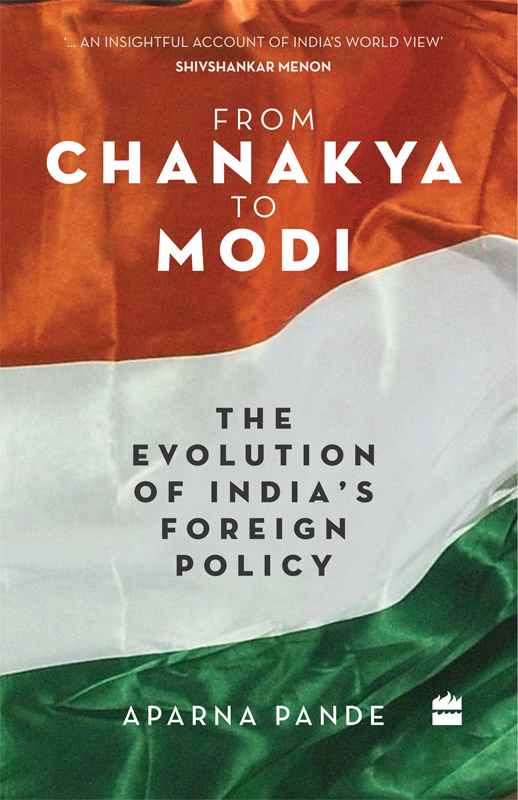
FROM CHANAKYA TO MODI
EVOLUTION OF INDIAS FOREIGN POLICY
APARNA PANDE

To my brother and sister-in-law, Chaitanya Pande and
Mona Kwatra Pande
Contents
IN 2015, A Delhi-based motor accidents tribunal adjudicated that animal-driven, slow-moving vehicles (or bullock carts) often caused serious accidents. Instead of banning these vehicles from the road, the court simply asked for them to be regulated.
Indias desire to combine the traditional with the modern permeates also the realm of its relations with the rest of the world. Addressing the United Nations General Assembly (UNGA) for the first time as prime minister in September 2014, Narendra Damodardas Modi, championed the adoption of an International Yoga Day,
On 21 June 2016, Modi joined 30,000 fellow citizens in a mass session of yoga in the heart of New Delhi. Interestingly, Modis supporters cited the global prevalence of yoga and the ease with which the United Nations adopted an international day for yoga as a sign of Indias arrival on the world stage as a major global power. Conventional definitions of what it means to be a great power would differ with this view. Increasing number of people practising the ancient regimen of yoga has little to do with the current influence of the Indian state around the world. Similarly, being a champion of anti-colonialism, a leading voice amongst the post-colonial developing countries, having been one of the founders of the Non-Aligned Movement (NAM), or even a prominent voice in multilateral institutions like the United Nations may give India global recognition and pride but it is hardly a substitute for hard power.
Many Indians believe their country has economic power, military strength and an important geostrategic location. To them, that alone should be enough for global power status coupled with Indias 5000-year-old civilization. However, in a recent book provocatively titled Why India Is Not A Great Power? (Yet), leading Indian strategist Bharat Karnad asserts that India does not fulfil the requirements of global power status, at least at the present moment. Karnad maintains that to be a great power a country needs a driving vision, a sense of national destiny, defining of national interests, and willingness to use coercion and force in support of national interests along with imaginative use of both hard and soft power. India is several steps short of that position.
That Indians believe that the popularity of yoga is evidence of Indias importance in the world explains how India views itself from a very different perspective than other nations. Indian leaders often suggest that the more India participates in multilateral organizations, adopts principled stands on global issues, champions global peace and disarmament and speaks out against military alliances, the higher the pedestal it occupies on the world stage. The reality of the world and the role India plays in it is more complex. This book is an effort to examine how Indias world view has evolved over the years and what institutions, ideas and attitudes have shaped it.
AN APOCRYPHAL STORY suggests that on his first day in office, every prime minister of modern India reads a letter on Indias foreign policy ostensibly written by the countrys first prime minister, Jawaharlal Nehru. The letter starts with the words, Dear successor, many generations have passed since this letter was written but this letter is as valid for you today as it was for me and your other predecessors. It goes on to list Indias interests and concerns and outlines the parameters within which an Indian leader can formulate his countrys foreign policy. The story about the imaginary letter demonstrates the abiding grip of history and tradition on the way India sees and interacts with the world.
With some variation, Indias external relations have shown remarkable continuity and consistency since Independence in 1947, notwithstanding changes in leaders and ruling political parties. India is not alone in such constancy. Most countries base their foreign policy on a template shaped by their national experience and view of self. In Indias case, its foreign policy paradigm borrows from its civilizational heritage as much as from modern ideas about national interest. Even when a policy idea appears new, it actually echoes one of several recurrent themes.
In his book Special Providence (2001) leading American thinker Walter Russell Mead identified four approaches that have shaped American foreign policy since US independence in 1776. US relations with the world, Mead argues, can be understood in light of defining ideas advanced by significant individuals at various times in US history. Thus, according to Mead, the Hamiltonian school of foreign policy, named after first secretary of the treasury, Alexander Hamilton, sees the first task of the American government as promoting the health of American enterprise at home and abroad. The Wilsonian ideal, enunciated by President Woodrow Wilson, believes that the United States has both a moral and a practical duty to spread its values through the world. The Jeffersonian view, put forward by President Thomas Jefferson, has seen the preservation of American democracy in a dangerous world as the most pressing and vital interest of the American people. The Jacksonian approach, crafted by President Andrew Jackson, represents a deeply embedded, widely spread populist and popular culture of honor, independence, courage and military pride among the American people. Makers of US foreign policy have tended to follow one or a combination of these schools of thought through most of US history though some have tried to embrace the European approach, which Mead terms continental realism, based on maintaining a balance of power to protect Americas global interests.
A similar analysis of Indias global outlook would help identify the context and underlying principles of Indias foreign policy. Several scholars have attempted to explain Indias world view though, unlike Mead in relation to the United States, they have not offered neat categories of Indian policy approaches. For example, in India: A Wounded Civilization (1976) Nobel laureate and Trinidadian of Indian descent, Sir Vidiadhar Surajprasad (V.S.) Naipaul, argues that Indias problems are not external or caused because of periodic invasions or conquest. He sees India as plagued with the crisis of what he refers to as a wounded old civilization that while aware of its inadequacies is without the intellectual means to move ahead. Naipauls broad-stroke analysis, when applied to Indian foreign policy, would suggest a desire for international respect without having the resources to exercise global power and a refusal to accept that reality.
Another perspective is offered by Sunil Khilnani, who, in The Idea of India (1997), argues that contemporary India has been shaped by a wager of Indias educated urban elite on modern ideas and modern agencies. It was a wager on an idea: the idea of India, Khilnani argues. Indias nationalist elite itself had no single, clear definition of this idea and one of the remarkable facts about the nationalist movement that brought India to independence was its capacity to entertain diverse, often contending visions of India Indian nationalism before independence was plural even at the top, a dhoti with endless folds. It contains people from markedly different backgrounds yet whose trajectories were often parallel. According to this standpoint, nationalism subsumed Indias diversity and its advocates hoped to build a modern India inspired by the past but connected to the present and looking towards the future.


